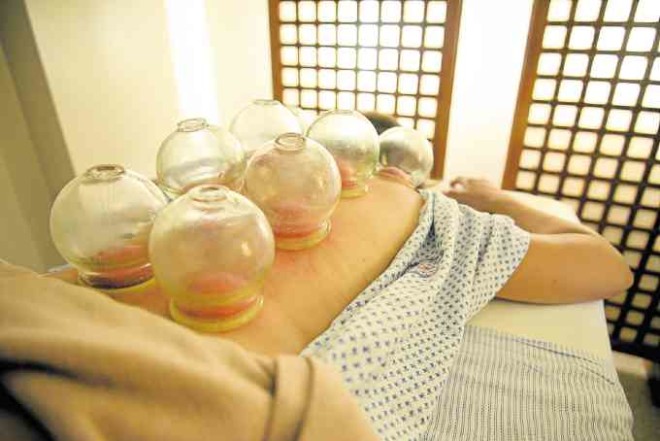Talc powder got flak, wall climbing made a comeback, Pilates attracted “real” men, a new diet that espoused eating as many as 20 eggs per day became a big hit, fitness studios made rowing interesting again, technology allowed one to predict an injury before it happened, and centuries-old ventosa became the most Googled word during the Summer Olympics.
The year 2016 may have been a time of highly agitated clatter and commotion, but in the fitness zone, it was a period of rediscovering old loves.

Cupping: Ventosa once again rose to popularity when Michael Phelps showed up at the Olympics with angry red marks on his back. The ancient healing practice supposedly removes the bad chi through its suction cups and restores the balance of energy in the body. That means setting the cups in such a way that heals a body’s specific illness.
Pilates: Suddenly, Pilates was not just some “stretching” women do. “Real” men are into this movement that heals and strengthens the body. It is a system of exercises executed with or without specialized equipment that targets five muscle groups: core, inner and outer thighs, glutes and back—collectively known as the “powerhouse” of the body. Pilates finally caught the attention of athletes like Kobe Bryant, LeBron James, Dwayne Wade, Jason Kidd, Steve Nash, Tiger Woods, and even US President Barack Obama.
Rowing: The rowing machine that used to gather dust in the gym is now in the spotlight with pumped-up classes that torch calories. Indoor rowing could be the next big thing in the local fitness scene.
Wall climbing: The resurgence of interest in wall climbing is credited to the recognition of the sport in the coming 2020 Tokyo Olympic Games, although millennials who missed out on its popularity in the ’90s make up its biggest market. A full body workout that promotes strength and flexibility, wall climbing has found its second wind in the 21st century.
Spinning: While stationary bicycles have been gym fixtures for the longest time, and cycling classes are a part of every gym’s aerobic group exercises, boutique spinning classes are a new addition. Students were no longer choosing classes based on time but on its theme—rock ’n’ roll, R&B, hip-hop, or pop.
Diet-meal deliveries: Losing weight to get back into shape is more convenient and affordable with diet-meal deliveries. Starting with the South Beach Diet in the mid-’90s, diet-food deliveries now include Cohen, Dukan, human chorionic gonadotropin (HCG), vegetarian, pescatarian, paleo/caveman diet.
Prime diet: This diet not only advocates eating healthy fats found in butter, it also allows one to eat as many as 20 eggs a day. That means eating the way our great-grandparents used to eat—they didn’t count calories, they didn’t throw away the egg yolk. More importantly, they ate only because they were hungry, not because it was time to eat. And they lived much longer than the modern-day Filipino.
Spotting injuries before they happen: Technology and fitness have merged, big-time. Now one can spot that knee injury before it even happens. There’s a computer that observes one’s running form, for instance, and corrects it in real time if the form is problematic. This then prevents the runner from future injuries. It’s the same technology that enables triathletes to join races with minimal or even zero injuries.
Two-story fitness complex: Kerry Sports opened in the country, offering 8,300 sqm of workout space. There’s a multitude of fitness choices to allow members to find their own exercise and space. It has everything one needs for their fitness programs, including sports such as basketball, tennis, swimming and squash. There is also a spa and an Adventure Zone for children.
24-hour gyms: Anytime Fitness, dubbed “the 24-hour neighborhood gym” chain, is designed for people who want to work out any time of day. To meet the demands of the gym rat, there are many programs, from antigravity to weight-resistance. It also has circuit training both for individual and group exercises.
Talc scare: When a jury in St. Louis, Missouri, awarded $55 million to a woman who claimed using J&J’s Baby Powder and Shower to Shower for feminine hygiene and which supposedly caused her to develop ovarian cancer, nearly everyone stayed away from talc powder. However, Carol Goodrich, spokesperson for Johnson & Johnson Consumer, told CNN: “Multiple scientific and regulatory reviews have determined that talc is safe for use in cosmetic products and the labeling on Johnson’s Baby Powder is appropriate.”
On its website, Johnson & Johnson states that its talc-based products, based on studies made by the FDA, are asbestos-free: “Various government agencies and other bodies have also examined talc to determine the potential for any safety risk, and none have concluded that there are safety risks. In fact, no regulatory agency has ever required a change in labeling to reflect any safety risk from talc powder products.”